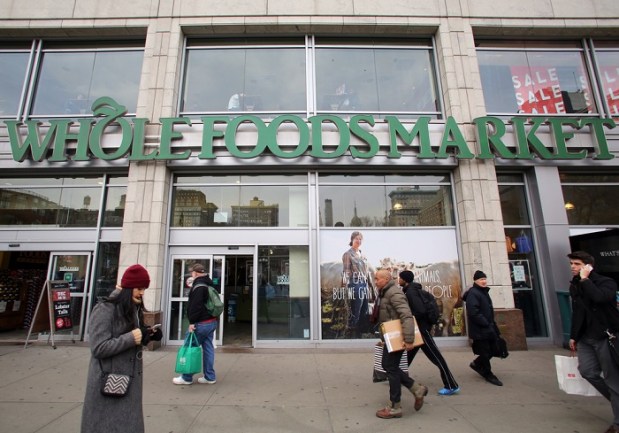Whole Foods Shuns Bargain-Centric Shopping

Whole Foods isn’t like any other grocery chain, and its executives have tried hard to make it that way. Rising to the top of the heap during the mid-2000s health food craze, Whole Foods is now a standby of the premium grocery market. However, what got Whole Foods to its current position might not be what it needs to stay there, though co-CEO John Mackey thinks otherwise.
In a presentation for investors Wednesday (Nov. 4), Mackey explained how Whole Foods plans on moving forward with a philosophy that emphasizes product differentiation and specialization rather than wholesale discounts and basement-level prices. Mackey agreed that the retail grocery landscape has changed in recent years, but even though traditionally inexpensive chains like Walmart and Target have started to adopt high-style marketing campaigns similar to those used by Whole Foods, he asserted that his company’s product specialization and consistently high level of quality will ultimately trump the demand for deep discounts.
“[Our competitors] are copying our look and feel and marketing, but they are not copying our quality standards, and so far, that’s a good strategy and it’s working,” Mackey said, as quoted by Supermarket News. “But many customers are not looking beneath the hood, and they’re not seeing the differences. So one of the challenges Whole Foods has is to do a better job of communicating our superior quality. The differentiation is definitely there in the perishables, from our animal welfare system in meat to our sustainable seafood to our responsibly-grown produce, and we have to do a better job connecting to customers to get them to understand these are not the same things [as others offer].”
Mackey is placing himself on uncertain ground, according to Karen Short and Scott Mushkin, retail analysts at Deutsche Bank and Wolfe Research, respectively. The critical issue is how consumer opinions’ on Whole Foods’ products and pricing continue to change. At the moment, Mushkin said that he is convinced shoppers think of Whole Foods as pervaded by a perceived quality gap – and while the grocer might think its organic products are worth higher price tags, their consumers simply aren’t willing to open their wallets.
“Whole Foods does not have a marketing problem — it has a value-proposition problem, and it needs to narrow the large pricing gap that is simply unsupported by what is increasingly only a perceived quality gap,” Short said, as quoted by Supermarket News. “If Whole Foods wants to drive comps, it will have to invest more in price.”
That could be easier said than done for the healthful grocer. A comparison of product prices by MarketWatch found that the gap between what Whole Foods charges for common items and what other, more affordable chains list their products isn’t easily reduced. For example, shredded cheese runs about 58 cents per ounce at Whole Foods, but just 36 cents at Trader Joe’s and 39 cents at Target. Bananas go for 99 cents per pound at Whole Foods, while Trader Joe’s prices bananas at 73 cents per pound.
The problem with combating a perceived quality gap is that even if Whole Foods reduces the pricing difference with its competitors by half, there’s the chance that Whole Foods’ overpriced reputation remains. After all, it’s not as if customers don’t appreciate the quality of goods offered at Whole Foods’ stores, but whether they’re willing to pay as much as Mackey wants them to might be an issue that’s only settled in checkout lines across the country.
“The reality is Whole Foods Market sells the highest quality food in the world,” Mackey said to investors, as quoted by Fortune. “It’s what our customers tell us they love most about us, and we’re not changing that.”
If Mackey is as inflexible on pricing in the coming months, though, it could be a tough food fight for Whole Foods.
